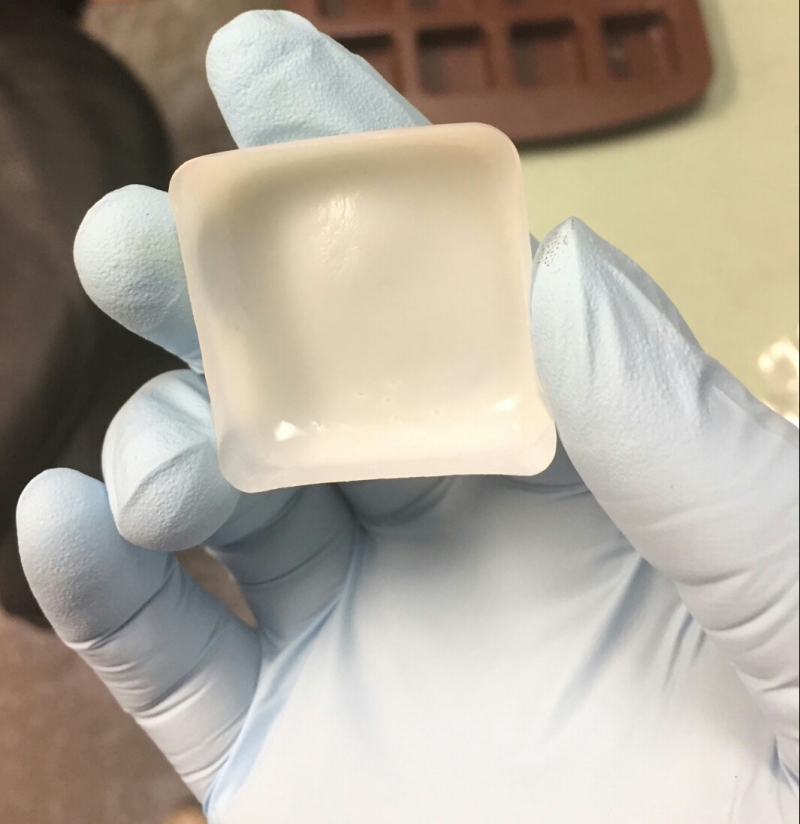Bioplastic Innovations: Reshaping Packaging Solutions for Smart Companies
Bioplastic Innovations: Reshaping Packaging Solutions for Smart Companies
Introduction:
What Does Bioplastic Innovations Mean?
Bioplastic innovations refer to advancements and developments in the field of bioplastics. Bioplastics are a category of materials that are designed to serve as alternatives to traditional petroleum-based plastics. What makes bioplastics unique is that they are derived from renewable sources, such as plants, algae, or microorganisms. They can also be designed to be biodegradable or compostable, making them more environmentally friendly.

Bioplastic Vs Traditional Plastic
Bioplastics are different from regular plastics in several important ways. First, they come from renewable sources like plants, while regular plastics are made from non-renewable materials like oil. Bioplastics can break down naturally, which regular plastics can't. This makes bioplastics better for the environment. As they reduce greenhouse gas emissions and our reliance on fossil fuels. But, bioplastics might not be as strong as regular plastics and may not work for all things. Also, recycling and composting bioplastics can be a bit different. So, it depends on what you need and care about when choosing between bioplastics and regular plastics.
Bioplastic Innovations:
Bioplastics, a promising alternative to conventional plastics derived from fossil fuels, have garnered significant attention due to their sustainability and eco-friendly attributes. Recent advancements in bioplastics technology have led to the development of novel materials, production processes, and innovative applications, particularly in the packaging sector.
Novel Bioplastic Materials
Polyethylene Furanoate (PEF): Derived from plant-based furan monomers, PEF exhibits remarkable properties like polyethylene terephthalate (PET), commonly used in beverage bottles. PEF offers high transparency, excellent barrier properties, and the ability to withstand heat. This makes it a promising alternative for food and beverage packaging.

(Omnexus)
Polylactic Acid (PLA): PLA, derived from renewable resources such as corn starch or sugarcane, has gained popularity due to its biodegradability and versatility. PLA can be molded into various shapes and forms. Thus, making it suitable for packaging applications such as food containers, disposable utensils, and films.

Cellulose-Based Bioplastics: Cellulose, a structural component of plant cell walls, serves as a promising raw material for bioplastics production. Cellulose can be processed into various bioplastics. This includes cellophane, cellulose nanocrystals, and bacterial cellulose, offering unique properties and applications in packaging.

Innovative Production Processes
Bioconversion of Waste Biomass:
- Utilizing microorganisms, bioconversion processes transform waste biomass, such as agricultural residues or food scraps, into bioplastics.
- This approach not only valorizes waste materials but also reduces the environmental impact of conventional plastic production.
Enzymatic Polymerization:
- Enzymes, biological catalysts, can be employed to synthesize bioplastics from renewable monomers. Enzymatic polymerization offers several advantages.
- This includes high specificity, mild reaction conditions, and reduced energy consumption.
Nanotechnology Integration:
- Incorporating nanomaterials into bioplastics can enhance their properties, such as mechanical strength, barrier performance, and antimicrobial properties.
- Nanotechnology enables the development of bioplastics with improved functionality and tailored applications.

Versatility in Packaging Applications
Food Packaging:
- Bioplastics are increasingly used for food packaging due to their ability to preserve the freshness and quality of food products.
- Bioplastics can be designed to provide specific barrier properties.
- One example is using oxygen barriers to extend shelf life. Another example is using moisture barriers to maintain product texture.
Flexible Packaging:
- Producing bioplastics in flexible forms, such as films and sheets.
- This makes them suitable for a wide range of packaging applications.
- This includes bags, pouches, and wraps. Bioplastic films offer excellent barrier properties, printability, and sealability.
Thermoformed Packaging:
- Bioplastics can be thermoformed into rigid containers.
- Thus, expanding their applicability in food packaging.
- Thermoformed bioplastic containers offer superior strength and heat resistance. It also offers compatibility with various filling and sealing techniques.
Protective Packaging:
- Bioplastics are increasingly used for protective packaging applications.
- Some examples are cushioning materials, void fillers, and edge protectors.
- Bioplastic foams and wraps provide effective impact absorption and protection for delicate products.
The continuous innovation in bioplastic materials, production processes, and applications is driving the growth of this sustainable alternative to conventional plastics. As environmental concerns intensify and consumer demand for eco-friendly products increases, bioplastics are poised to play an increasingly significant role in various packaging solutions.
Benefits Of Adopting Bioplastic Innovations:
Variations by Region and Emphasis on Sustainability
The regulatory framework surrounding bioplastics varies across countries and regions, but there is a growing emphasis on sustainability and environmental responsibility in plastic use. Several regulatory measures, incentives, tax benefits, and mandates have been established to encourage the adoption of bioplastics and sustainable packaging solutions:
Bioplastic Standards and Labeling:
- Many countries and regions have set up standards and certifications for bioplastics, such as the European Union's EN 13432 or the United States' ASTM D6400.
- These standards ensure bioplastics meet specific criteria for biodegradability, compostability, and environmental impact.
Mandatory Use of Bioplastics:
- Some governments have passed laws mandating the use of bioplastics or specific biodegradable materials in particular applications.
- For example, Italy and France have enforced laws requiring the use of compostable bags for certain purposes.
Tax Incentives and Subsidies:
- Some governments provide tax incentives, subsidies, or grants to companies investing in bioplastic production or incorporating bioplastics into their products.
- These financial incentives encourage businesses to opt for more sustainable packaging materials.
Extended Producer Responsibility (EPR) Programs:
- EPR programs shift the responsibility for end-of-life product and packaging management to producers. Companies using bioplastics may enjoy these programs.
- As they often encourage the use of materials that are easier to recycle, compost, or manage.
Environmental Goals and Regulations:
- Governments worldwide are setting ambitious environmental goals, including targets to reduce plastic waste and increase recycling rates.
- Adopting bioplastics can help companies align with these goals and avoid potential fines for non-compliance.
Consumer Awareness and Preferences:
- The increasing awareness and preference for sustainable products among consumers are powerful drivers for companies to adopt bioplastics.
- Meeting consumer demands for eco-friendly packaging can enhance brand reputation and market share.
Circular Economy Initiatives:
- Many governments and organizations promote circular economy principles, which focus on the reduction, reuse, and recycling of materials.
- Bioplastics, especially those designed for easy recycling or composting, align with these principles.
Company Benefits from Regulatory Measures:
Compliance with Regulations:
- Using bioplastics helps companies ensure compliance with environmental regulations. This reduces the risk of fines related to the use of traditional plastics or unsustainable packaging materials.
Positive Brand Image:
- Demonstrating a commitment to sustainability and environmental responsibility can enhance a company's brand image and reputation. This would attract eco-conscious consumers and environmentally-conscious investors.
Cost Savings:
- Some incentives and subsidies can lead to cost savings for companies adopting bioplastics. Thus, making them a financially attractive choice.
Market Access:
- Companies using bioplastics can gain access to markets. These markets would have biodegradable and compostable materials that are mandated or preferred. Thus, creating new business opportunities.

In summary, the regulatory framework surrounding bioplastics is evolving to encourage their adoption and promote sustainable packaging practices. Companies that embrace bioplastics not only help protect the environment but also position themselves to follow regulations, access incentives, and foster a positive corporate image.
To know more about Bioplastics/ Eco-friendly products:
- Bioplastic Products: Are They Truly Sustainable?
- Bio-Based Plastics: A Solution for a Cleaner and Healthier Planet
- Switch to Sugarcane Bioplastics and Reduce Your Carbon Footprint Today
Contact us
AirX is the world’s first carbon-negative bio-material made from coffee grounds manufacturer.
We specialize in producing bio-based composites using recycled carbohydrates derived from by-products such as coffee grounds, coconut husk, husk, and bamboo. Our goal is to promote sustainability through the use of eco-friendly materials.
We are always here to help and provide the best service possible. If you have any questions or would like to receive advice and feedback directly from our sales staff, please do not hesitate to contact us. You can reach us through:
Whatsapp: +84 969 742 950
Email: [email protected]
We look forward to hearing from you!

